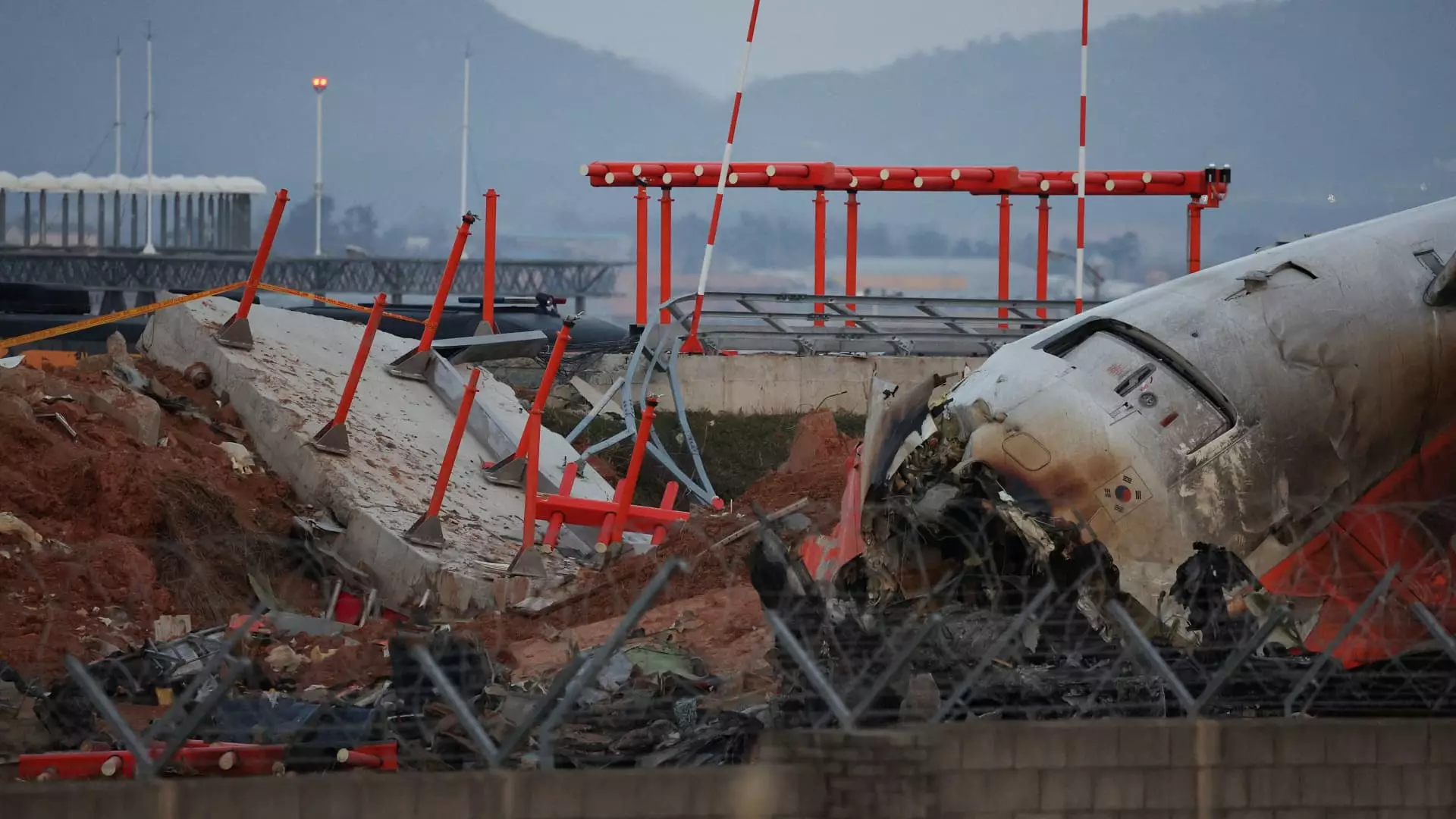The tragic incident involving Jeju Air Flight 7C2216, which resulted in the loss of 179 lives, has stirred profound grief across South Korea and raised pressing questions about aviation safety. On December 29, the Boeing 737-800 operating the flight from Bangkok to Muan made a catastrophic belly landing after reporting a bird strike just minutes before the disaster. The ramifications of this tragedy are far-reaching, amplifying the need for thorough investigations into the incident’s causes and the efficacy of safety protocols.
One of the most striking revelations from the ongoing investigation is that the flight data and cockpit voice recorders, crucial forensic tools for understanding the circumstances leading up to an accident, ceased recording approximately four minutes before the impact. Initially analyzed in South Korea, the missing data prompted authorities to send the voice recorder to the U.S. National Transportation Safety Board for further examination. The abrupt cessation of recording suggests a significant malfunction, potentially involving a complete power loss, including to backup systems—an unusual occurrence in modern aircraft.
As the investigation unfolds, it becomes clear that multiple avenues need to be explored. The South Korean transport ministry has stated that while the missing data poses challenges, other information will be utilized to piece together the events of that fateful day. It is essential that the inquiry proceeds transparently, offering reassurance to the victims’ families, many of whom have called for the involvement of independent experts to ensure a fair and comprehensive investigation. Their involvement would not only bolster the integrity of the findings but also help restore public faith in aviation safety measures.
The Role of External Factors
In many accidents, structural factors can play a significant role. Investigators are scrutinizing the embankment into which the plane crashed; its design and proximity to the runway raise questions about safety regulations. This embankment was meant to support a ‘localizer’ system, a vital aid for aircraft during landing, but the rigid material and its placement may have contributed to the disastrous outcome. Understanding all aspects of the crash will require meticulous analysis of both human and environmental factors.
The Emotional Toll and Institutional Response
The emotional impact of this disaster cannot be understated. Families of those who perished are left grappling with unimaginable loss and are seeking accountability from the institutions that govern aviation safety. Some family members have vocally expressed that the investigation should not be led solely by the transport ministry, urging for a collaborative approach that includes independent analysis, which could lead to a more robust understanding of what went wrong.
As investigations continue, the overarching goal will be to extract meaningful lessons from this calamity to prevent future tragedies. Every component of this distressing event—from the aircraft’s mechanical systems to the response capabilities of airport infrastructure—must be rigorously examined. The implications of the findings will resonate globally, as they might inform changes in safety protocols and regulatory practices. By ensuring transparency and inviting diverse expertise, South Korea can not only honor the memories of those lost but also reaffirm its commitment to aviation safety for all in the future.



Leave a Reply